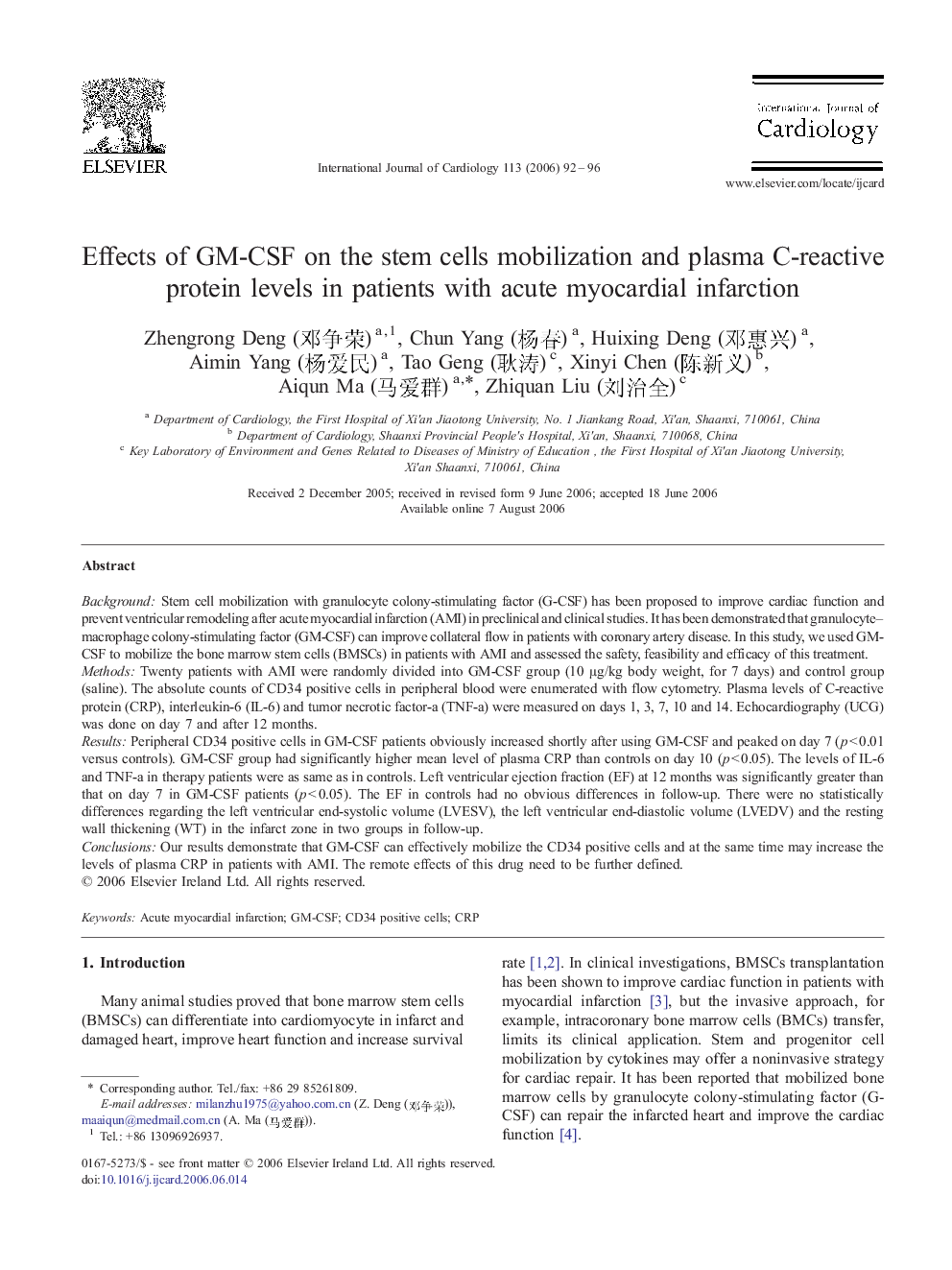| Article ID | Journal | Published Year | Pages | File Type |
|---|---|---|---|---|
| 2936203 | International Journal of Cardiology | 2006 | 5 Pages |
BackgroundStem cell mobilization with granulocyte colony-stimulating factor (G-CSF) has been proposed to improve cardiac function and prevent ventricular remodeling after acute myocardial infarction (AMI) in preclinical and clinical studies. It has been demonstrated that granulocyte–macrophage colony-stimulating factor (GM-CSF) can improve collateral flow in patients with coronary artery disease. In this study, we used GM-CSF to mobilize the bone marrow stem cells (BMSCs) in patients with AMI and assessed the safety, feasibility and efficacy of this treatment.MethodsTwenty patients with AMI were randomly divided into GM-CSF group (10 μg/kg body weight, for 7 days) and control group (saline). The absolute counts of CD34 positive cells in peripheral blood were enumerated with flow cytometry. Plasma levels of C-reactive protein (CRP), interleukin-6 (IL-6) and tumor necrotic factor-a (TNF-a) were measured on days 1, 3, 7, 10 and 14. Echocardiography (UCG) was done on day 7 and after 12 months.ResultsPeripheral CD34 positive cells in GM-CSF patients obviously increased shortly after using GM-CSF and peaked on day 7 (p < 0.01 versus controls). GM-CSF group had significantly higher mean level of plasma CRP than controls on day 10 (p < 0.05). The levels of IL-6 and TNF-a in therapy patients were as same as in controls. Left ventricular ejection fraction (EF) at 12 months was significantly greater than that on day 7 in GM-CSF patients (p < 0.05). The EF in controls had no obvious differences in follow-up. There were no statistically differences regarding the left ventricular end-systolic volume (LVESV), the left ventricular end-diastolic volume (LVEDV) and the resting wall thickening (WT) in the infarct zone in two groups in follow-up.ConclusionsOur results demonstrate that GM-CSF can effectively mobilize the CD34 positive cells and at the same time may increase the levels of plasma CRP in patients with AMI. The remote effects of this drug need to be further defined.
